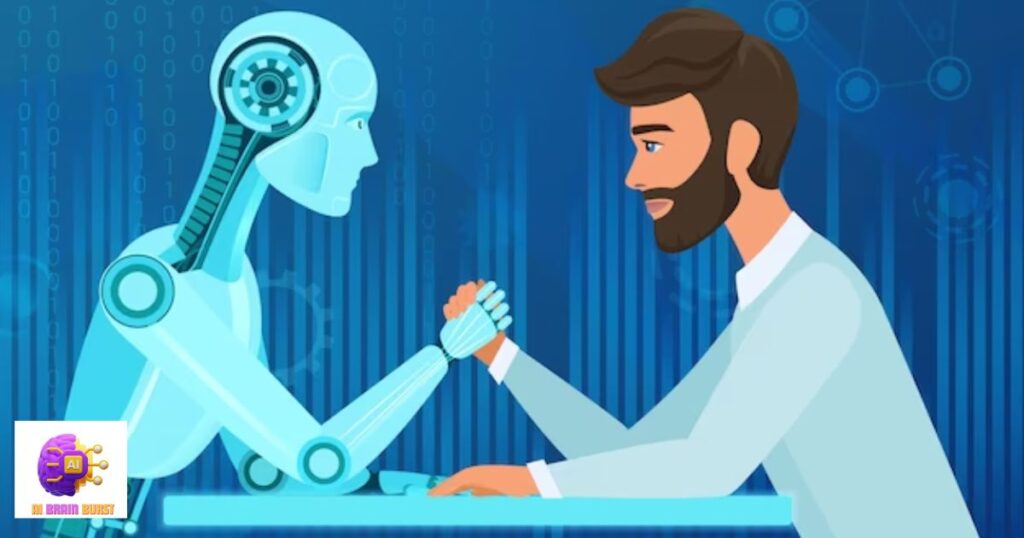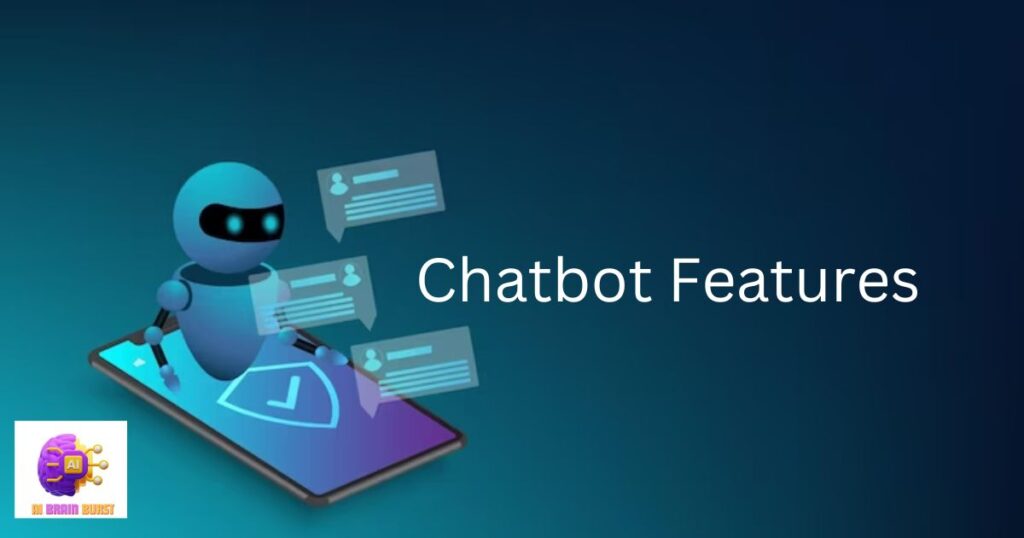Human: A sentient being belonging to the species Homo sapiens, characterized by intelligence, self-awareness, and the ability to communicate through language.
AI (Artificial Intelligence) Computer systems designed to perform tasks that typically require human intelligence, such as problem-solving, learning, and decision-making, often using algorithms and machine learning. AI aims to mimic or simulate human cognitive functions.
Curious about the voices behind the screen? Wondering, Am I talking to a human or AI? Dive into the world where lines blur between human intelligence and artificial counterparts, sparking conversations that challenge perceptions and redefine interactions. Discover the truth behind the digital veil.
Am I Talking To A Human Or Ai Free

In the ever-evolving digital landscape, the question lingers: Am I talking to a human or AI? Uncover the mystery behind your online interactions with the Am I Talking to a Human or AI? free service. This innovative tool allows users to discern whether they’re engaging with a real person or artificial intelligence, offering transparency in a world where technology and humanity intersect. Embrace the curiosity, and explore a new dimension where the lines between human and AI communication are clarified, providing a unique insight into the fascinating realms of technology and conversation.
Empower yourself with the knowledge to distinguish between human and AI voices, fostering a deeper understanding of the digital dynamics shaping our daily interactions. With this free service, gain the ability to navigate the virtual landscape with confidence, one conversation at a time. If you ever encounter issues like character AI not working, our platform provides the resources and insights to troubleshoot and enhance your experience seamlessly.
Human Or Not
1. Authentic Connections: Engaging with humans fosters genuine and authentic connections, bringing warmth and empathy to interactions that machines may lack.
2. Creative Problem-Solving: Humans excel at thinking outside the box, providing innovative solutions and creative problem-solving skills that artificial entities might struggle to replicate.
3. Emotional Intelligence: Humans possess emotional intelligence, allowing them to understand and respond to nuanced emotions, a crucial aspect often absent in non-human entities.
4. Adaptability: Humans exhibit a remarkable ability to adapt to new situations, learn from experiences, and evolve over time, ensuring a dynamic and flexible approach to challenges.
5. Complex Decision-Making: Humans navigate complex decision-making processes, considering various factors, ethics, and emotions, contributing to well-rounded and thoughtful choices.
6. Cultural Sensitivity: Humans inherently understand cultural nuances and diverse perspectives, facilitating cross-cultural communication and fostering a globalized, interconnected world.
7. Continuous Learning: The human capacity for lifelong learning enables individuals to stay updated, acquire new skills, and remain relevant in a rapidly changing world, showcasing adaptability and resilience.
Human Or Not Game Chatgpt

Step into the fascinating realm of the Human or Not game powered by ChatGPT. This interactive experience challenges players to discern whether they are conversing with a human or the AI language model, adding an intriguing layer to online interactions. As you engage in this game, explore the nuances of language, wit, and understanding, testing your ability to differentiate between the authentic human touch and the advanced capabilities of artificial intelligence.
Embark on a journey where curiosity meets technology, and let the Human or Not game not only entertain but also spark contemplation about the evolving landscape of human-machine interactions. Whether you’re a tech enthusiast or simply intrigued by the possibilities of AI, this game promises a delightful blend of challenge and discovery, offering a glimpse into the capabilities of ChatGPT in the realm of conversation and communication.
How To Play Human Or Not?

| Step | Instructions |
| 1 | Access the “Human or Not” game interface. |
| 2 | Initiate a conversation with the chat interface. |
| 3 | Engage in dialogue with the participant. |
| 4 | Observe responses carefully for language cues. |
| 5 | Analyze the style, tone, and complexity of replies. |
| 6 | Make a judgment whether the response is from a human or AI. |
| 7 | Repeat the process with different interactions. |
| 8 | Keep track of your accuracy in distinguishing between human and AI responses. |
| 9 | Enjoy the challenge and explore the nuances of human-machine interactions. |
Why Can’t I Play Human Or Not
Unfortunately, the Human or Not game is not available for direct play by users. The game likely involves specialized algorithms and technology that are integrated into specific interfaces or applications. Access to such technology may be restricted to certain platforms, and the game may not be widely accessible for individual play due to technical complexities and considerations.
If you’re intrigued by the concept of distinguishing between human and AI responses, there may be alternative experiences or discussions available online that explore similar themes. While you may not be able to play “Human or Not” directly, you can still engage in conversations, forums, or activities that delve into the fascinating world of human-machine interactions, providing insights into the capabilities of artificial intelligence in language processing.
Why Is Human Or Not Popular?

The popularity of Human or Not can be attributed to its captivating fusion of technology and human interaction. In a world increasingly influenced by artificial intelligence, the game taps into the curiosity surrounding the ability to distinguish between human and AI responses. It provides a fun and engaging way for people to explore the evolving landscape of language models, fostering a deeper understanding of the intricacies involved in human-machine interactions.
Moreover, Human or Not captures attention because it reflects the broader societal fascination with the capabilities of AI. As technology continues to advance, the game serves as a window into the progress made in natural language processing, showcasing the sophistication of language models like ChatGPT. Its popularity stems from the unique blend of entertainment and education, making it an accessible and enjoyable experience for individuals keen on exploring the boundaries of human and artificial intelligence.
Human Or Not Alternative

For those seeking an alternative to Human or Not, various interactive experiences and online platforms explore similar themes of human-AI interaction. Engage in forums or chat applications that involve discussions with both humans and AI to sharpen your ability to discern between the two. Some online communities even host challenges or games where participants can test their skills in distinguishing human responses from those generated by AI models, providing an alternative and entertaining way to explore the nuances of language processing.
Additionally, consider exploring AI-related podcasts, articles, or videos that delve into the latest developments in artificial intelligence and its impact on human communication. These resources offer valuable insights and discussions, allowing you to stay informed about the rapidly evolving field while enhancing your understanding of the distinctions between human and machine-generated content.
Human Or Not Online

1. Entertaining Engagement: Participating in “Human or Not Online” offers an entertaining and interactive experience, blending technology and amusement to keep users engaged.
2. Enhanced Critical Thinking: The game cultivates critical thinking skills as players analyze responses, fostering a sharper ability to discern between human and AI-generated content.
3. Insight into AI Capabilities: By playing the game, users gain insights into the remarkable capabilities of AI in language processing, witnessing firsthand the advancements in artificial intelligence technology.
4. Community Connection: Engaging in the online version creates a sense of community as players share experiences, discuss strategies, and collectively explore the boundaries of human-machine interactions.
5. Educational Exploration: Human or Not Online serves as an educational tool, providing a practical way to explore the intricacies of natural language processing and understand the challenges in creating lifelike AI responses.
6. Technological Awareness: Players develop a heightened awareness of the evolving technological landscape, staying informed about the latest trends and innovations in the field of artificial intelligence.
7. Continuous Improvement: Regular play encourages continuous improvement in distinguishing between human and AI responses, enhancing language comprehension and reinforcing the ability to navigate nuanced communication.
Ai Or Human Test

| Aspect | AI Response | Human Response |
| Complexity of Thought | May exhibit intricate and algorithmic reasoning. | Reflects personal experiences, emotions, and intuition. |
| Emotional Nuances | May lack genuine emotional understanding. | Expresses authentic emotions with nuanced responses. |
| Creativity | Generates responses based on learned patterns. | Showcases originality, imagination, and creative thinking. |
| Cultural Awareness | May struggle to grasp cultural nuances. | Demonstrates an understanding of cultural context and sensitivity. |
| Adaptability | Responds consistently to patterns and data. | Adapts to new information, learns, and evolves over time. |
| Humor | May generate jokes based on learned patterns. | Expresses a unique sense of humor and creativity. |
| Personal Experiences | Lacks personal experiences; relies on data. | Shares personal anecdotes and subjective viewpoints. |
| Language Complexity | May excel in complex language structures. | Uses language in diverse ways, reflecting individual style. |
| Error or Ambiguity Handling | May struggle with ambiguous queries. | Excels in navigating uncertainties, clarifying ambiguities. |
What Are Chatbots? How Do We Use Them?

Chatbots are computer programs designed to simulate conversation with users, often in a natural language format. These digital assistants utilize artificial intelligence (AI) to understand and respond to user queries, providing a seamless and interactive experience. Chatbots can be integrated into various platforms, including websites, messaging apps, and customer support systems, offering users a quick and efficient way to obtain information or assistance.
To use chatbots, individuals can interact with them by typing or speaking their queries, and the chatbot responds with pre-programmed or learned responses. Businesses deploy chatbots to streamline customer interactions, handle routine inquiries, and enhance user engagement. Whether guiding users through a website, answering frequently asked questions, or facilitating online transactions, chatbots play a versatile role in simplifying communication processes and improving overall user experiences.
Which Chatbot Platform Should You Use?
Choosing the right chatbot platform depends on your specific needs and preferences. Popular options include platforms like Dialogflow, Microsoft Bot Framework, and IBM Watson Assistant. If simplicity and integration with Google services are important, Dialogflow might be a suitable choice. On the other hand, Microsoft Bot Framework offers a robust solution with extensive tools for development, while IBM Watson Assistant stands out for its advanced natural language processing capabilities.
Chatbot Features

1. Efficient Customer Support: Chatbots streamline customer service by instantly addressing queries, providing quick solutions, and reducing response times, enhancing overall customer satisfaction.
2. 24/7 Availability: With round-the-clock availability, chatbots offer continuous assistance, ensuring users can access information or support whenever they need it, irrespective of time zones.
3. Cost-Effective: Automated responses and task execution by chatbots contribute to cost savings, as businesses can handle routine inquiries without the need for a large human support team.
4. Language Understanding: Natural language processing enables chatbots to comprehend user input, making interactions more natural and accessible, even for those unfamiliar with specific commands.
5. Personalization: Machine learning capabilities empower chatbots to learn from user interactions, allowing for personalized responses and recommendations tailored to individual preferences and needs.
6. Task Automation: Chatbots excel at automating repetitive tasks, freeing up human resources to focus on more complex and strategic aspects of their roles, thereby increasing overall productivity.
7. Scalability: Chatbots efficiently scale to handle a high volume of simultaneous interactions, ensuring businesses can accommodate growing user bases without compromising service quality or response times.
FAQ’s
How do you tell if you’re talking to an AI?
You can often tell if you’re talking to an AI by analyzing the responses for consistency, lack of emotional nuance, and a reliance on factual information over subjective experiences.
Is it a chatbot or human?
Distinguishing between a chatbot and a human can be challenging, but clues like the speed and consistency of responses, lack of emotional depth, or the ability to handle specific queries may indicate interaction with a chatbot.
Can I play human or not?
As of now, the Human or Not game is not directly available for individual play, but you can engage in conversations or activities that explore the distinctions between human and AI interactions.
Can I speak to an AI?
Yes, you can interact with AI through various platforms, chatbots, or virtual assistants that utilize natural language processing to understand and respond to your queries.
Conclusion
In conclusion, the dynamic intersection of human interaction and artificial intelligence continues to shape our digital experiences. From engaging in games like Human or Not to conversing with sophisticated chatbots, we navigate a landscape where the boundaries between human and AI communication blur. As technology evolves, so does our understanding of these interactions, opening avenues for entertainment, education, and exploration. The balance between the human touch and the capabilities of AI remains a captivating journey, one that holds promises of innovation, efficiency, and deeper connections in our increasingly digital world. Embracing this coexistence, we embark on a future where the dialogue between humanity and artificial intelligence continues to unfold, bringing forth exciting possibilities and challenges alike.








